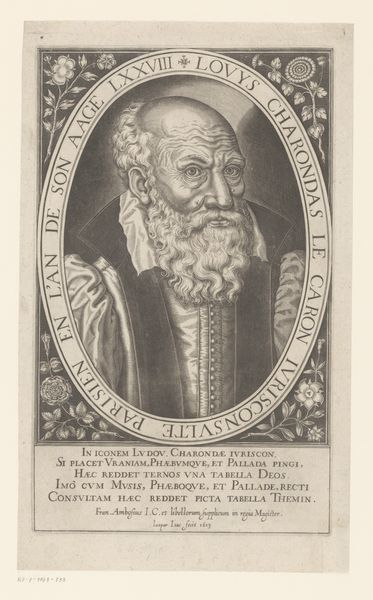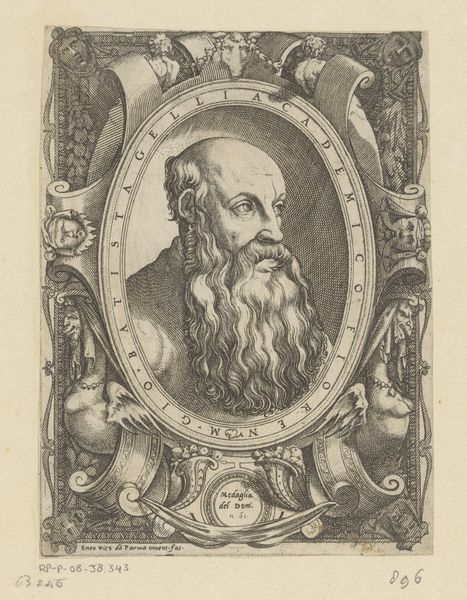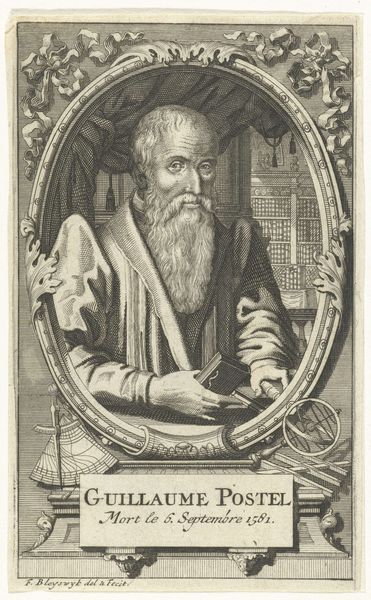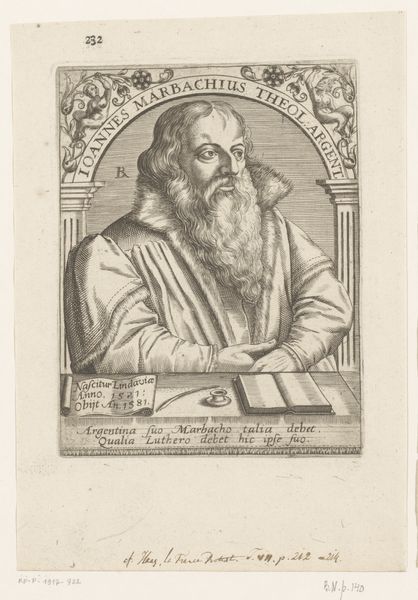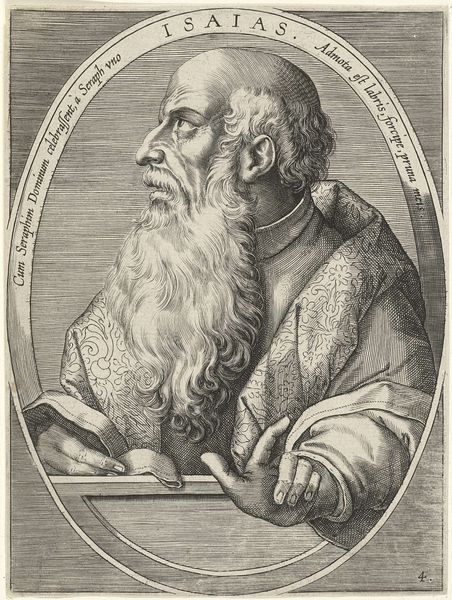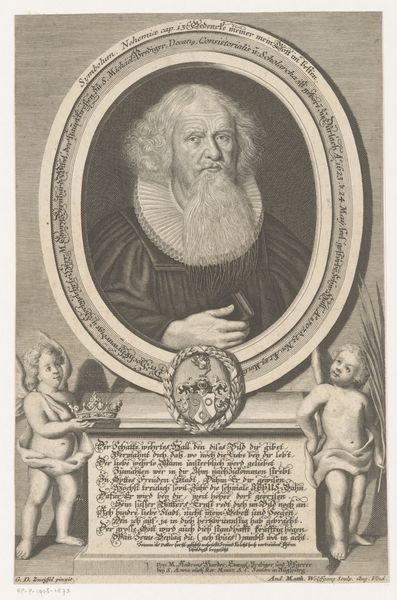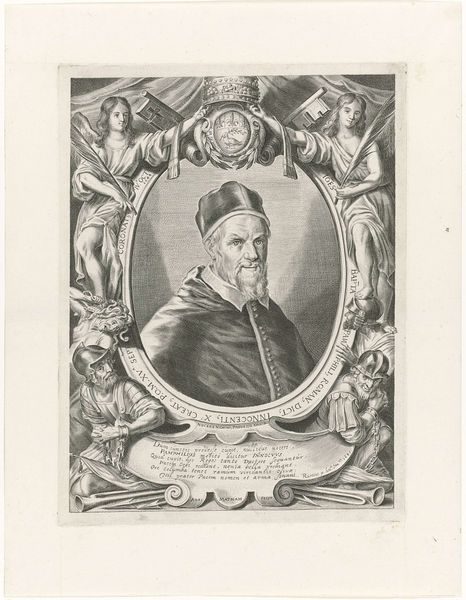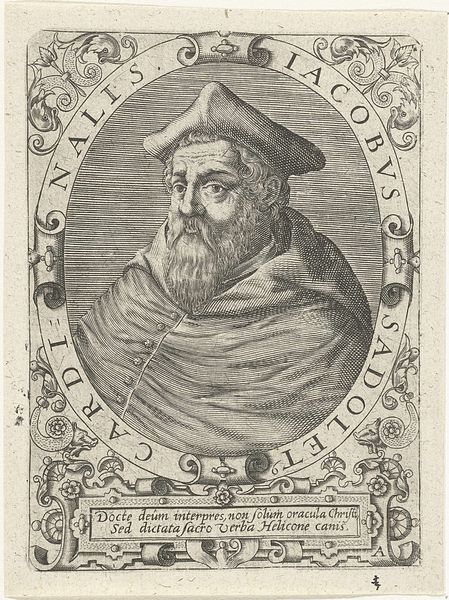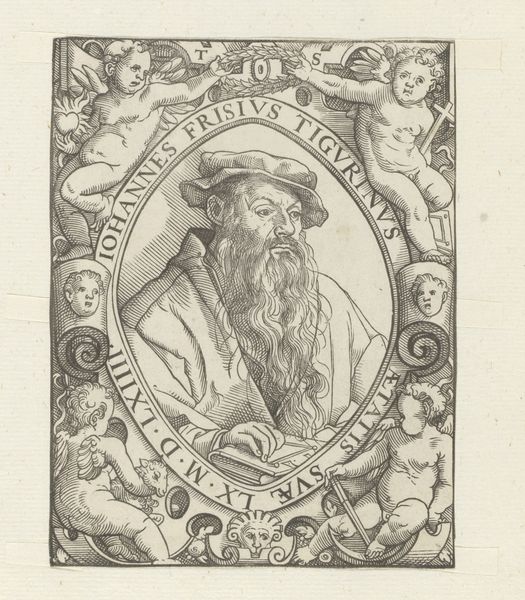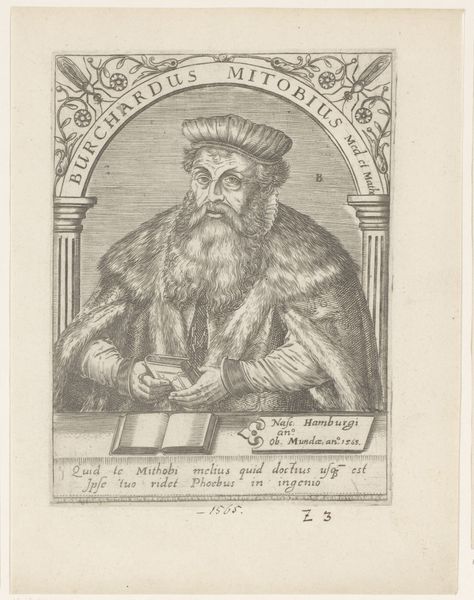
drawing, print, engraving
#
portrait
#
drawing
#
pen drawing
#
mechanical pen drawing
# print
#
pen sketch
#
pencil sketch
#
old engraving style
#
mannerism
#
pen-ink sketch
#
limited contrast and shading
#
pen work
#
history-painting
#
engraving
#
pencil art
#
intricate and detailed
Dimensions: height 113 mm, width 89 mm, height 207 mm, width 163 mm
Copyright: Rijks Museum: Open Domain
Curator: Let’s take a look at a fascinating portrait here at the Rijksmuseum, "Portret van Johann Heinrich Bullinger," a print attributed to Karel van Sichem, dating from around 1585 to 1645. What's your initial reaction? Editor: My eye is immediately drawn to the material texture – the fine, deliberate lines of the engraving creating such depth. I'm curious about the labour and craft that went into creating this repeatable image. Curator: Indeed, the meticulous detail is striking. The print not only captures Bullinger's likeness but also situates him within an elaborate symbolic framework. Note the figures flanking the portrait—Sapientia and Ratio—representing wisdom and reason. They act as virtues associated with the sitter. Editor: I see those figures. And it is a reproductive technology--it speaks to circulation and dissemination of Bullinger's image and ideals at the time. What kind of political or religious factors enabled distribution to a broader audience? Curator: Bullinger was a highly influential figure in the Reformation. This portrait probably reinforced and spread his image among followers and adversaries alike. It's less about just likeness and more about projecting authority. Note the inclusion of the latin motto too! Editor: I am curious about the use of a print as a medium--presumably on paper--circulating widely compared to painting as a unique art object. What type of access did different socio-economic classes have? How did the tactile feel of the paper, and even its eventual degradation, influence the perception of Bullinger's message? Curator: An interesting perspective. And prints definitely democratized image ownership to an extent previously unimaginable, though literacy, of course, remained a barrier to engaging fully with texts. As for Bullinger, he remains an important figure—a powerful figure promoted through print, even today. Editor: Ultimately it’s fascinating to think about the layered nature of this image – the hand of Sichem shaping the public perception of a key religious figure through labor-intensive engraving techniques. I appreciate you drawing attention to its cultural influence through the image.
Comments
No comments
Be the first to comment and join the conversation on the ultimate creative platform.
